Colorful Shadows
Developed by Leslie Andrade, PCM Play Intensive 2021
(FOCUS: Pre K, STEM, Design Thinking)
In this lesson, students will explore how different combinations of colors of light change the color of shadows. This challenge encourages children to explore the effect of light sources and the colors produced from various combinations of light on an object. Children will experiment with removing one color of light to see how it changes the shadow of an object.
A shadow is caused by an object blocking light so that it does not reach a surface. The area in shadows appears black because there is no light falling on it. It appears dark. In fact, most shadows are not totally black because light usually bounces around and off objects. What happens when 3 colors combine to make a background white? How does the light change the shadow of an object?
Materials
- 3 Plug in socket adapters (available at hardware store)
- Colored light bulbs—one red, one green, one blue
- Power strip with 6 outlets
- White Foam board – around 22×28 inches
- Pencil or object to make a shadow
- 2 pieces of duct tape- about 4 inches long
- Scissors
- Small box
- Table
- Yard stick
- 2 pieces of small cardboard (about 4×6) or large index card
Set Up
Screw the bulbs into the socket adapters. Then plug the bulbs into the power strip in the order of red, green and then blue. Leave a plug outlet in between the red and green and the green and blue.
Mount the foam board to the box so it will stand up. Push the foam board against the box. The box should be at the bottom of the board right in the middle. Put one piece of duct tape (about 4 inches) inside the box top and tape it to the foam board. The other piece of tape should go on the side of the box to the board.
Set up the bulbs and the white surface, which is your screen, in such a way that the light from all three bulbs falls on the same area of the screen and all bulbs are approximately the same distance from the screen. The light bulbs will be a little more than 3 feet from the screen.
Darken the room as much as possible. Have a child hold up a pencil or a narrow object fairly close to the screen. Adjust the distance until you see three colored shadows on the screen. Remove the object, block one of the colored lights by placing a small piece of cardboard in front of the light bulb and notice how the color on the screen changes. Put the object in front of the screen again and notice the colors of the shadows.
Student’s Job
Have children work in pairs. Can you change the colors of the shadow of a pencil by using different combinations of the colored light bulbs? Can you tell which light is casting which shadow?
- All light bulbs are on. Hold the small cardboard in front of two of the lightbulbs. What color is the white board? What color is the shadow of the pencil? How many shadows are there?
- Cover only one light bulb with a piece of cardboard. What color is the white board now? What color is the shadow of the pencil? How many shadows are there?
- Let all three light bulbs shine on the screen. What color is the white board now? What color is the shadow of the pencil? How many shadows are there?
- Can you move the object close to the screen until the shadows overlap? Notice the color of the combined shadows.
Further Challenges:
When you have two lights (or more) uncovered, can you figure out which shadow is being cast by which light bulb? How can you test your guess? (Cover one light bulb at a time)
Hint: When all three light bulbs are lit, the shadow in the middle is magenta. What two light bulbs do you think make that color? Using that information can you figure out what color combinations are making the other shadows? What information does that tell you about the way light travels?
Vary the size of the object and the distance from the screen.
Try using your hand as an object.
Try using a different color foam board.
Teacher’s Job
Align this lesson to the standards.
RI EARLY LEARNING AND DEVELOPMENT STANDARDS: SCIENCE
Component 1: Scientific Inquiry and Application
Children learn to plan for and carry out investigations and collect, evaluate, and communicate information.
RI EARLY LEARNING AND DEVELOPMENT STANDARDS: COGNITIVE DEVELOPMENT
Component 1: Logic and Reasoning
Children apply strategies and draw upon past knowledge and experiences to meet goals and solve problems.
RI EARLY LEARNING AND DEVELOPMENT STANDARDS: MATHEMATICS
Component 5: Geometry and Spatial Sense
Children learn to identify shapes and their attributes, solve problems using shapes, and explore the positions of objects in space.
Connections to previous work?
Connect to work on primary and secondary colors. Also, helpful for children to have had some exposure to work with shadows such as “Growing Shadows” a lesson found on Providence Children’s Museum. You can also find a unit on Shadows and Reflections – Boston Public Schools Focus K1
Prepare/ Background Info
Light travels in a straight line. Here is a link to a video which explains the experiment step by step and shows a video of what is happening.
Facilitation Strategies
Assistance may be needed with covering light bulbs. Setting boundaries around turn taking, assigning roles such as who will hold the pencil or object being projected and guiding children to form and test hypothesis will be helpful in keeping children on task and focused throughout this experiment/challenge. Having children work in small groups or pairs may also be helpful.
Play to Notice
Through experiential play children learn from their environment by interacting with real objects, choosing their own paths, experimenting, making mistakes and trying again. The teacher should be a facilitator who monitors progress and encourages students to problem solve by providing necessary scaffolding and resources. It may be helpful to record some of the children’s observations and conversations on chart paper. You can help the children stay focused on next steps to help guide further exploration by reviewing their thoughts/ideas thus far. What do they want to know? How will they find out the answer?
Content Matter to Notice
Children’s connections to previous experiences with color mixing. Use of vocabulary words such as spatial positioning, directionality of light, and opaque. Observe children’s strategy and approach to problem solving.
SEL to Notice
Staying focused, listening to peer’s suggestions and ideas and implementing “next steps” in a small group may be difficult. Help children with turn taking and if needed, help develop a systematic process for recording and following children’s suggestions/ideas so each child feels respected and trusts his/her idea will be accepted and tried.

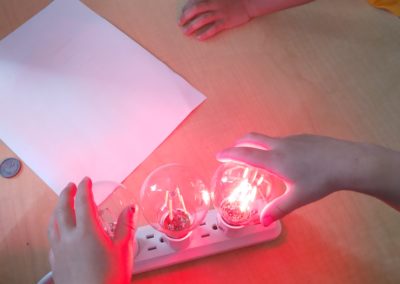
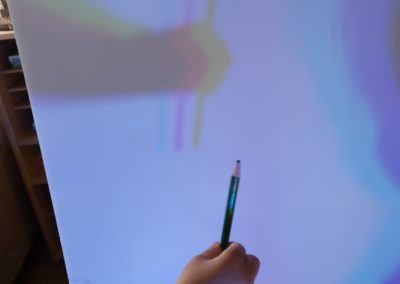
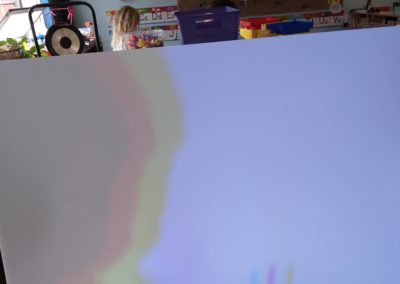
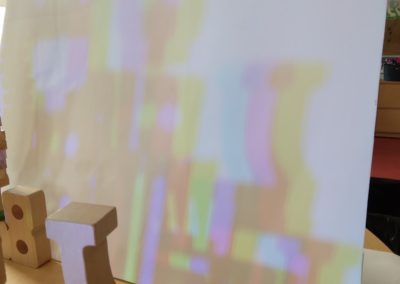
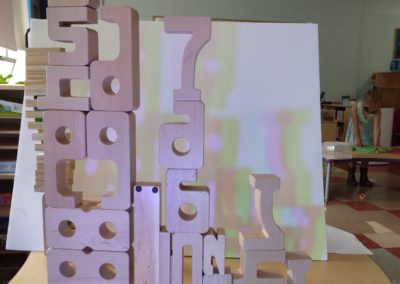
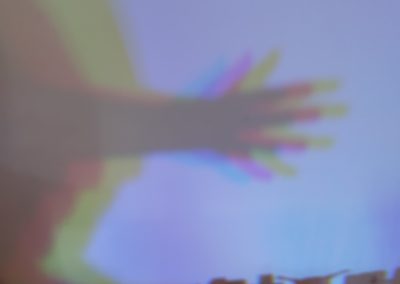

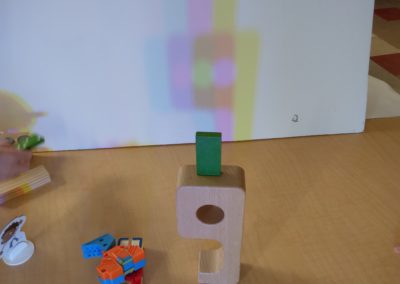
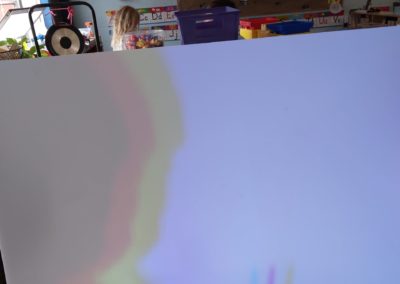
0 Comments